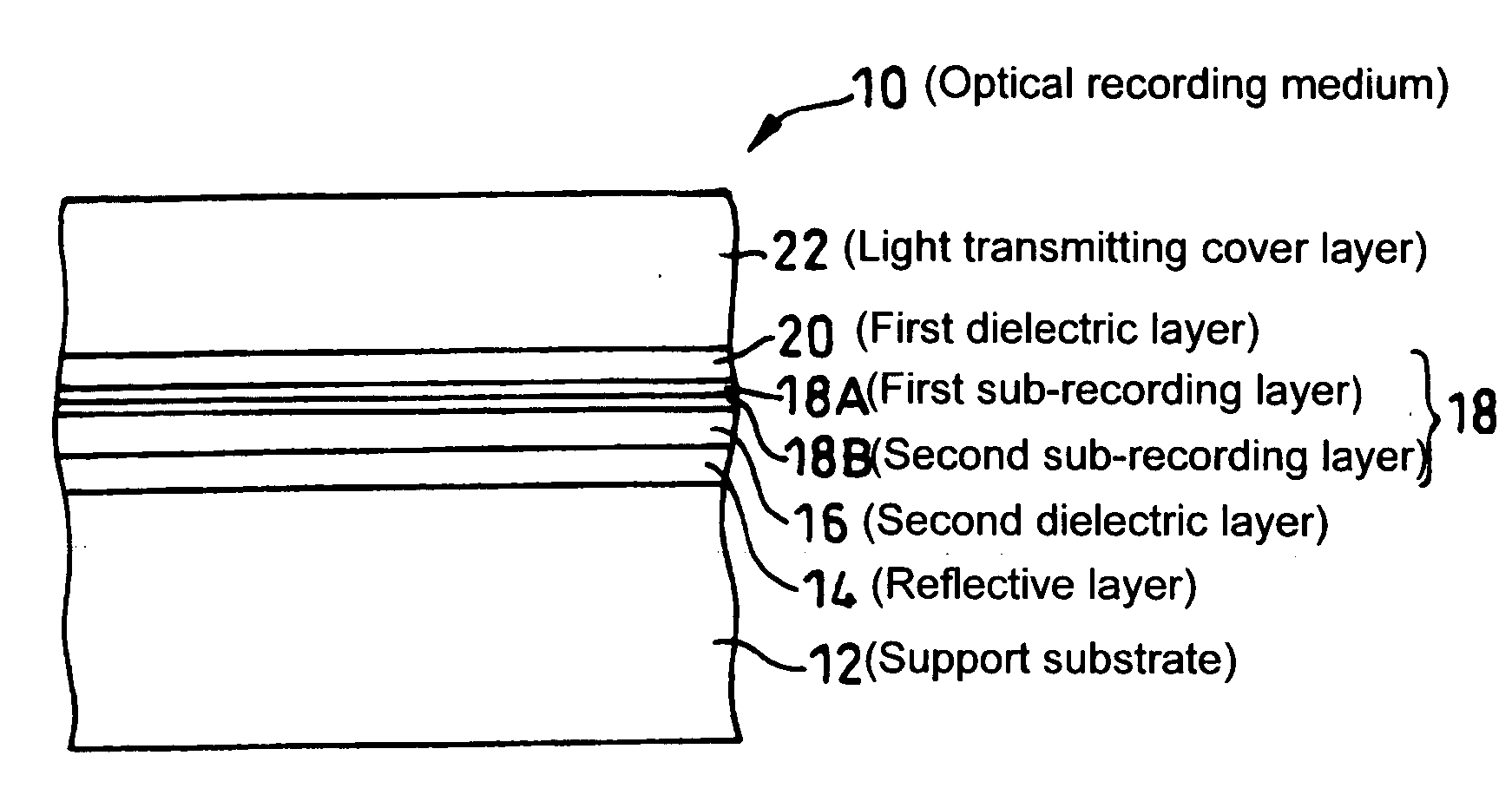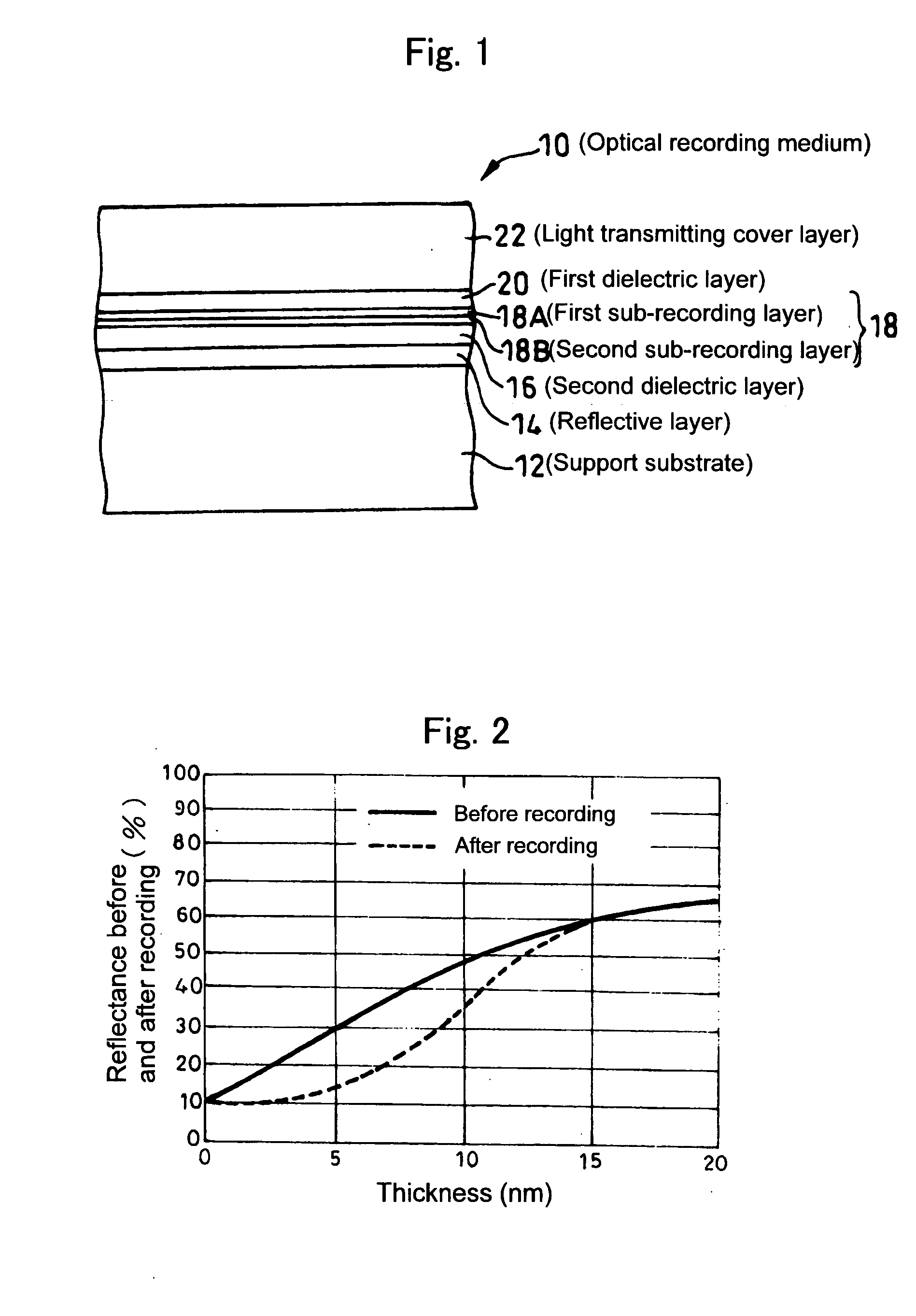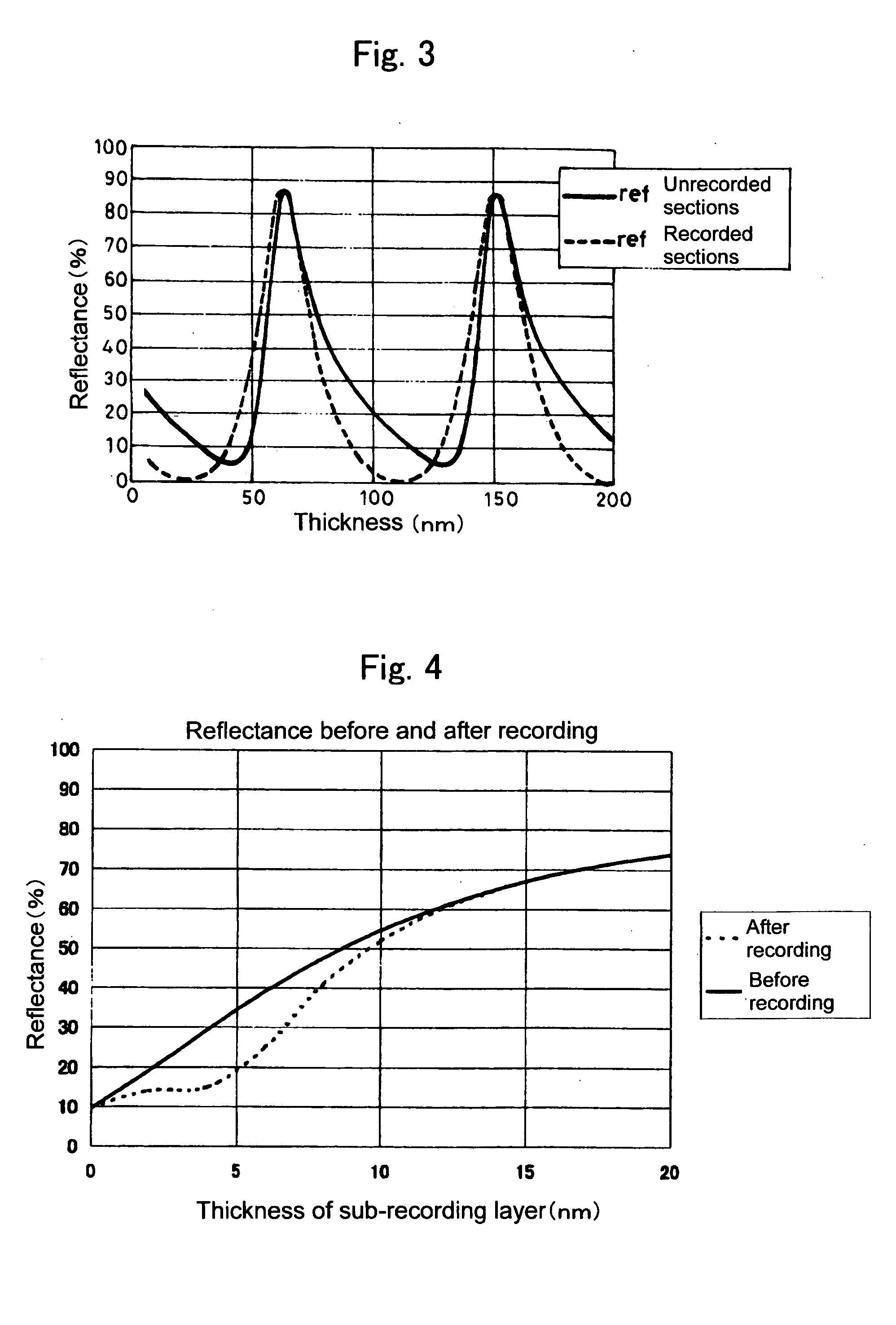Method of regulating reflectance of worm type optical recording medium and worm type optical recording medium
a technology of optical recording medium and reflectance, which is applied in the direction of optical recording/reproducing/erasing methods, instruments, flat record carrier containers, etc., can solve the problems of inability to write-once type optical media capable of high-speed recording with laser beams of wavelengths unable to achieve the synthesis of dyes, especially suitable for use with short wavelength laser beams that are blue or shorter than blue wavelengths, and low cost. , to achieve the effect o
- Summary
- Abstract
- Description
- Claims
- Application Information
AI Technical Summary
Benefits of technology
Problems solved by technology
Method used
Image
Examples
example 1
[0070] For the optical recording medium 10 described above, characteristics were evaluated for the relationship between the thickness of the recording layer 18 comprising a high reflectance metal as the primary component, and the reflectance.
[0071] The specific structure of each layer of the optical recording medium 10 for these evaluations is shown below.
[0072] Reflective layer 14: not formed
[0073] Dielectric layers 16, 20: ZnS+SiO2 (80:20 mol %)
[0074] First dielectric layer 20: 40 nm, second dielectric layer 16: 80 nm
[0075] First sub-recording layer 18A: AlCr (98:2 at %)
[0076] Second sub-recording layer 18B: Sb 10 nm
[0077] The thickness of the first sub-recording layer 18A was varied within a range from 0 to 20 nm.
[0078] Using an evaluation apparatus with a laser beam of wavelength 405 nm, recording was conducted under measurement conditions including a linear velocity of 5.3 m / s (35 Mbps) and a laser output of 10 mW, and the reflectance before and after formation of recor...
example 2
[0089] Next is a description of another example in which the reflectance is adjusted.
[0090] If the thickness of the recording layer of an optical recording medium 10 is set to no more than 20 nm, and a reflective layer 14 is formed, then the reflectance of the optical recording medium 10 is largely controlled by the reflection at the interface between the reflective layer 14 and the second dielectric layer 16.
[0091] An evaluation was conducted of the reflectance characteristics when the thickness of the second dielectric layer 16 was varied. The conditions for the tests were as follows, and other conditions were the same as those described above for the example 1.
[0092] Reflective layer 14: silver alloy AgPdCu (98:1:1 at %) 100 nm
[0093] First dielectric layer 20: 55 nm (fixed)
[0094] Second dielectric layer 16: 5 to 200 nm
[0095] First sub-recording layer 18A: AlCr (98:2 at %) 4 nm
[0096] Second sub-recording layer 18B: Sb 6 nm
[0097] The results of the tests are shown in FIG. 3...
example 3
[0107] For the optical recording medium 10 described above, factors such as the material of the second sub-recording layer 18B were altered, and the characteristics were evaluated for the relationship between the thickness of the recording layer 18, comprising a high reflectance metal as the primary component, and the reflectance. The structure of each layer of the optical recording medium 10 for these evaluations is shown below. A reflective layer was not provided.
[0108] Dielectric layers: ZnS+SiO2 (80:20 mol %)
[0109] First dielectric 20: 60 nm,
[0110] Second dielectric 16: 60 nm
[0111] First sub-recording layer 18A: AlCr (98:2 at %)
[0112] Second sub-recording layer 18B: C 8 nm
[0113] The thickness of the first sub-recording layer 18A was varied within a range from 0 to 20 nm.
[0114] Using the evaluation apparatus with a wavelength of 405 nm, recording was conducted under measurement conditions including a linear velocity of 5.3 m / s and a laser output of 10 mW, and the reflectan...
PUM
| Property | Measurement | Unit |
|---|---|---|
| reflectance | aaaaa | aaaaa |
| reflectance | aaaaa | aaaaa |
| reflectance | aaaaa | aaaaa |
Abstract
Description
Claims
Application Information
 Login to View More
Login to View More - R&D
- Intellectual Property
- Life Sciences
- Materials
- Tech Scout
- Unparalleled Data Quality
- Higher Quality Content
- 60% Fewer Hallucinations
Browse by: Latest US Patents, China's latest patents, Technical Efficacy Thesaurus, Application Domain, Technology Topic, Popular Technical Reports.
© 2025 PatSnap. All rights reserved.Legal|Privacy policy|Modern Slavery Act Transparency Statement|Sitemap|About US| Contact US: help@patsnap.com



